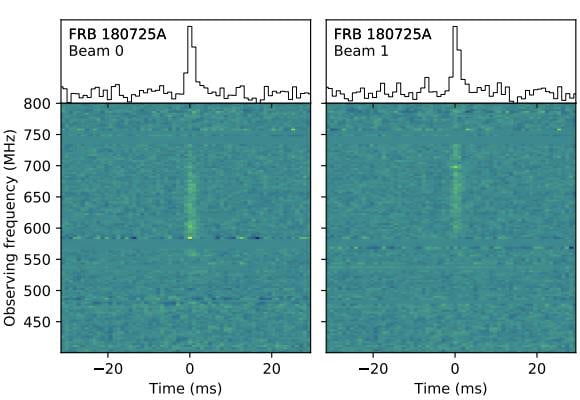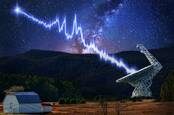This article is more than 1 year old
First low-frequency fast radio burst to grace our skies detected at last
Nobody knows what these rare speedy electromagnetic spurts really are
The Canadian Hydrogen Intensity Mapping Experiment, a super-duper radio telescope, has detected the first low-frequency fast radio burst, a class of rare extragalactic emissions of an unknown origin.
Fast radio bursts (FRBs) were first spotted over ten years ago. Since 2007, there have been around 30 confirmed sightings. On July 25, CHIME recorded a weird signal codenamed FRB 180725A at 17:59:43 UTC emitted at 580 MHz - a lower frequency than most FRBs.
“The automated pipeline triggered the recording to disk of ~20 seconds of buffered raw intensity data around the time of the FRB. The event is clearly detected at frequencies as low as 580 MHz and represents the first detection of an FRB at radio frequencies below 700 MHz,” according to a post on The Astronomer’s Telegram, a webpage where astronomers can quickly post their new observations.
Here’s what it looks like. In a diagram measuring the radio frequency over time, there is a clear bright streak beginning below 600 MHz. The burst quickly disappears after 2 milliseconds.
Most FRBs have been discovered by rooting through old observations recorded in data - unlike FRB 180725A, which was detected in real time. Hunting for these mysterious signals is tricky and most of it comes down to luck since scientists don’t know their origin and they often don’t repeat - except FRB 121102, the only one that has popped up in exactly the same spot.
There are many theories that could explain the fast, powerful radio blips, from spinning neutron stars to alien spaceships.
A previous study in Nature traced the repeating FRB to an otherwise bog standard dwarf galaxy three million light years away, and realized the emission was completely polarised in a given direction.
The strong polarization has led scientists to believe that the source of FRBs either originates in or passes through an incredibly powerful magnetic fields. And their fast nature points to a very narrow region of space leading some scientists to speculate that they could be coming from magnetars, a type of neutron star known to spin up extremely powerful magnetic fields that lead to x-rays and and gamma rays. ®


